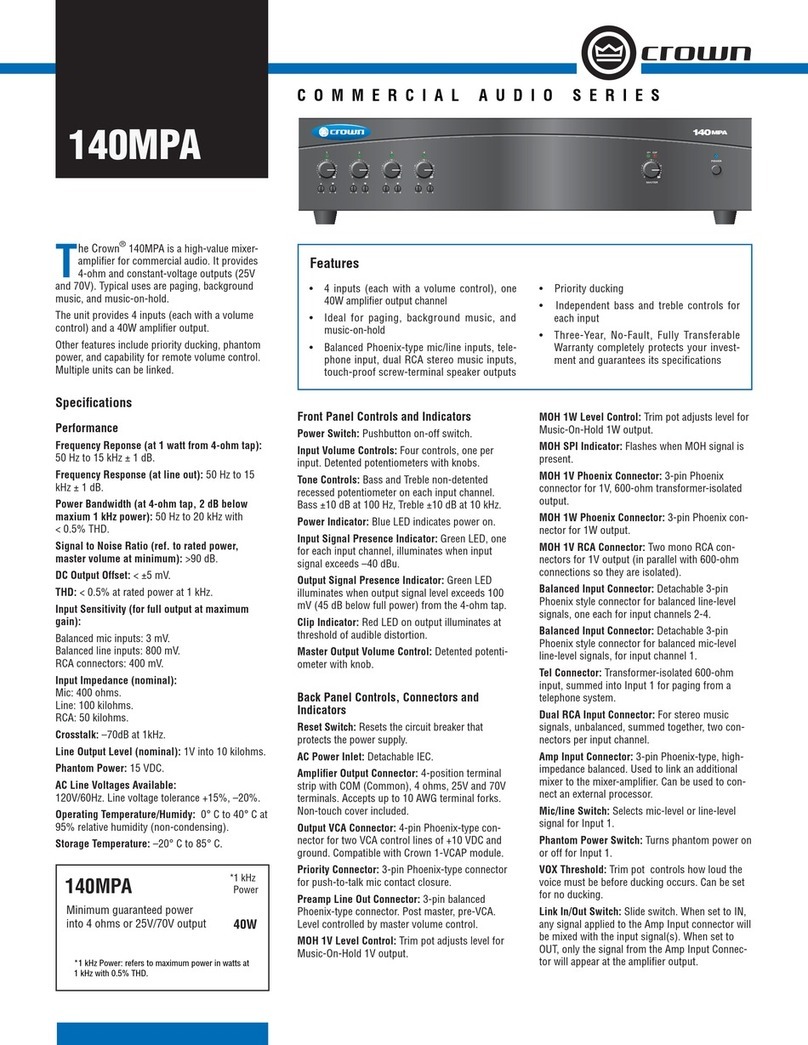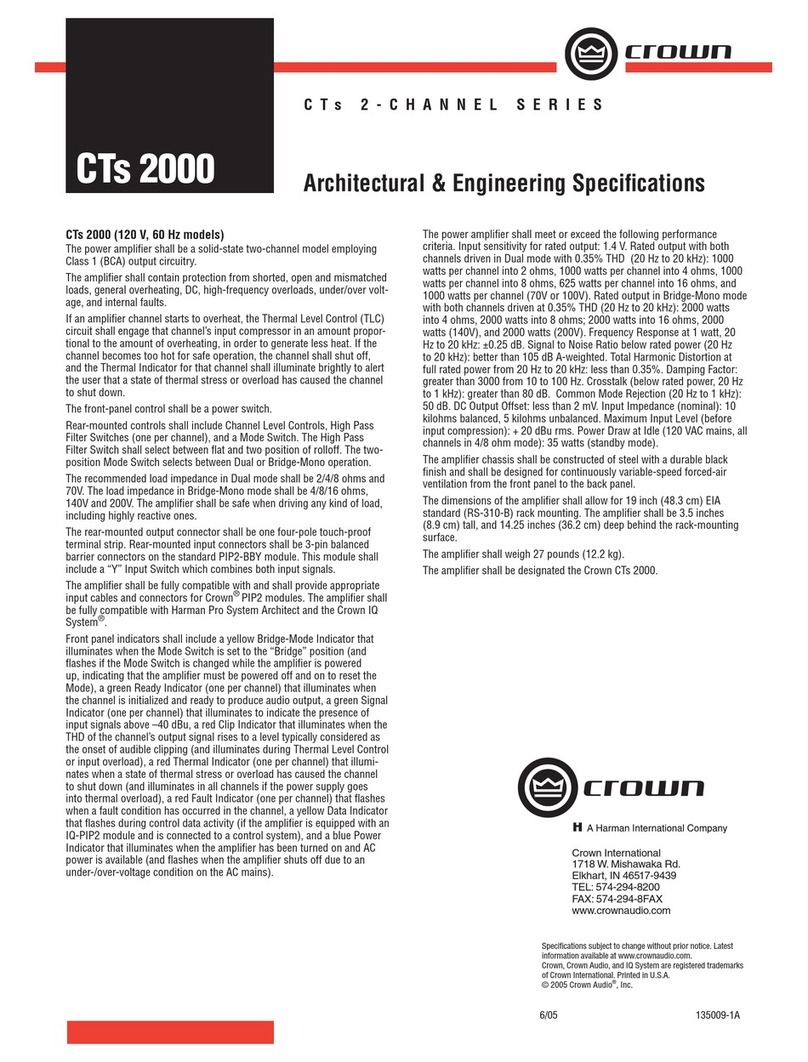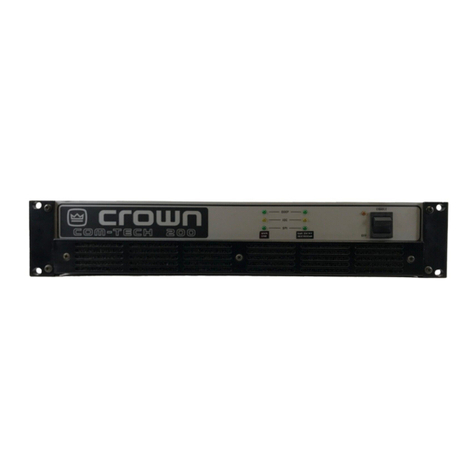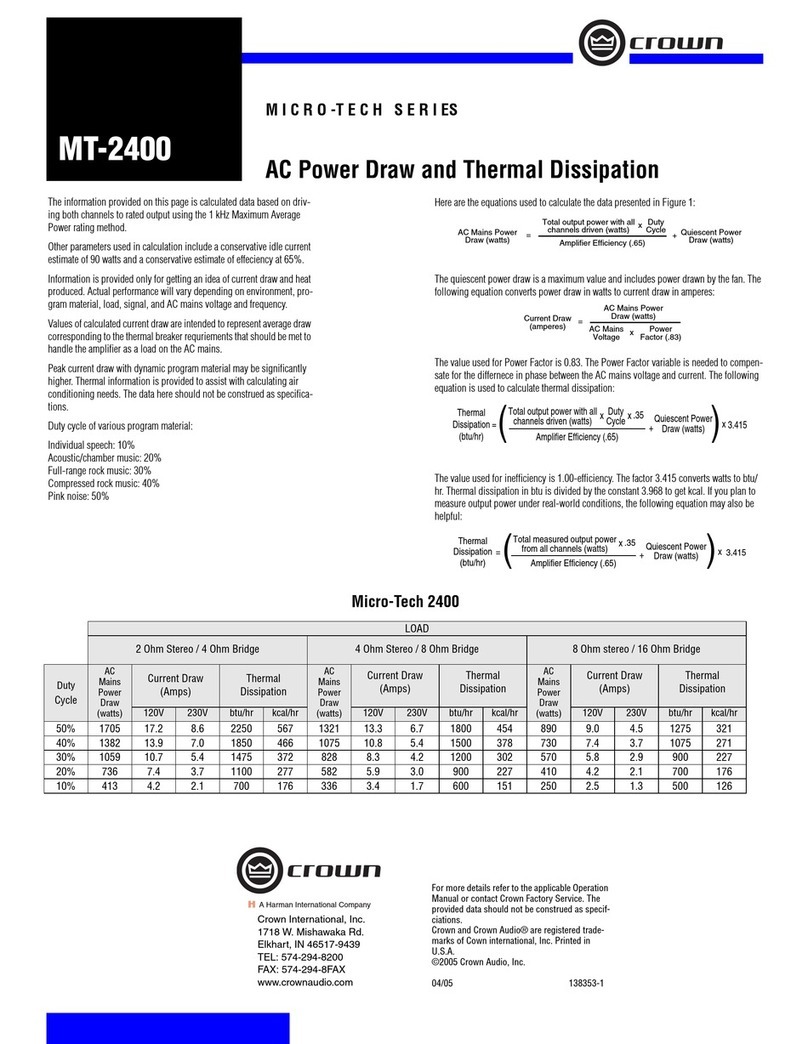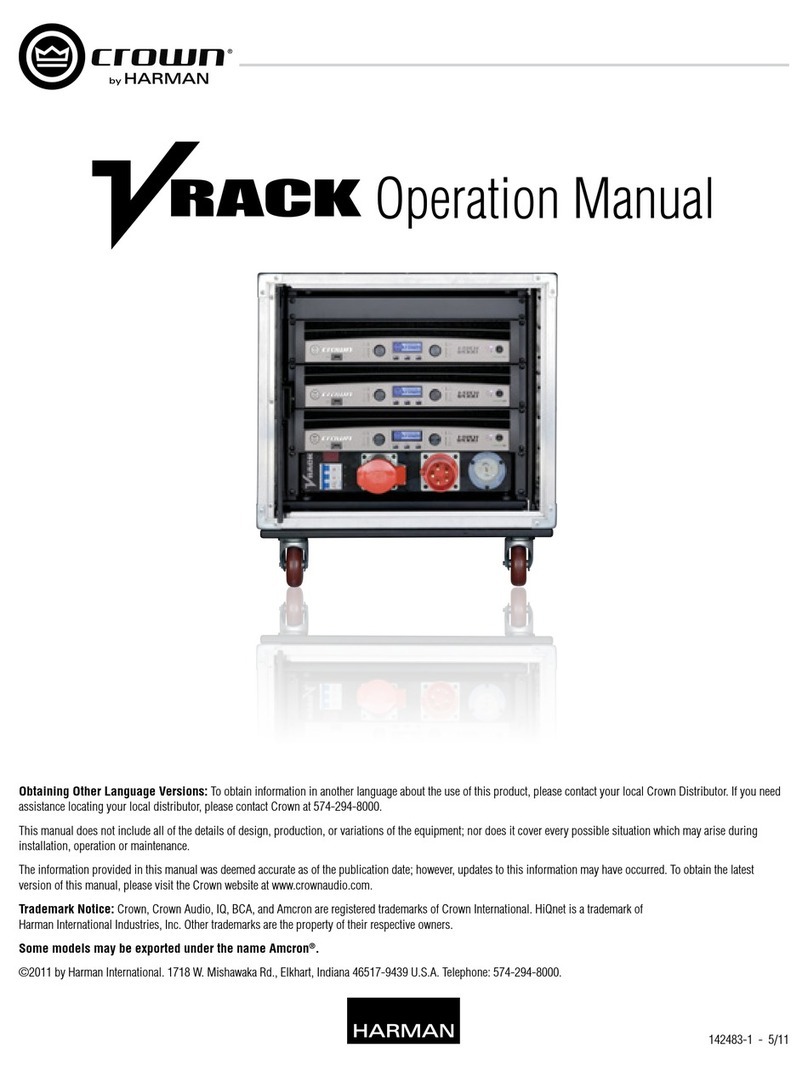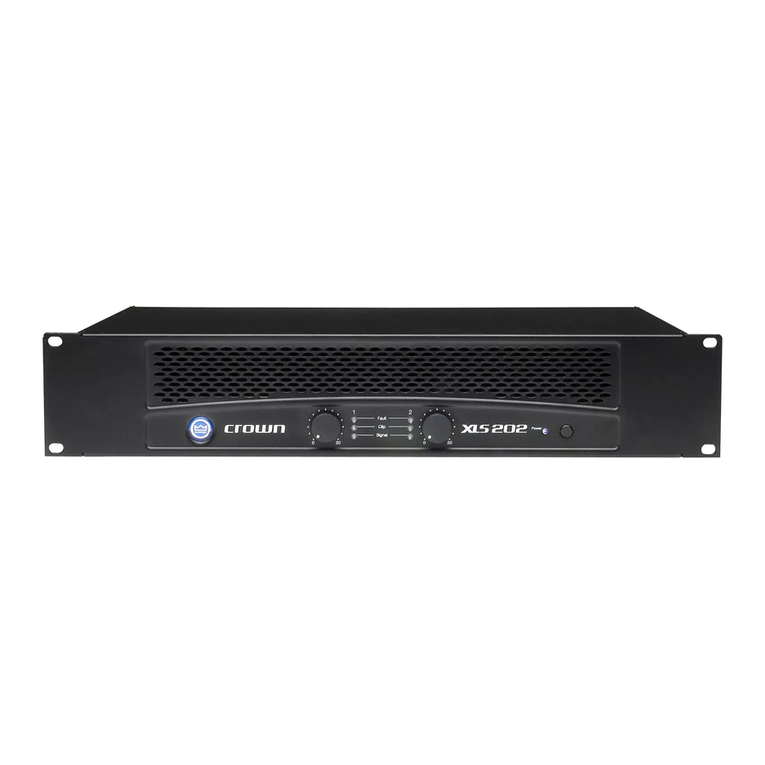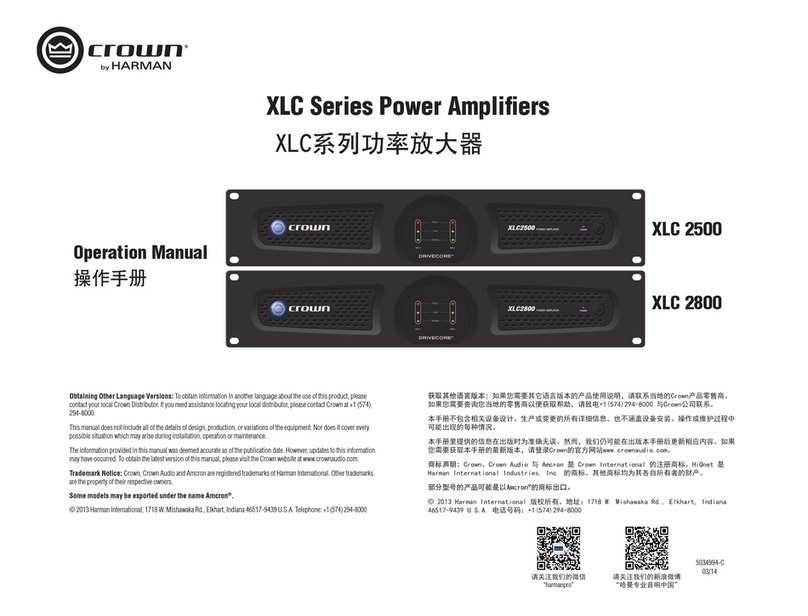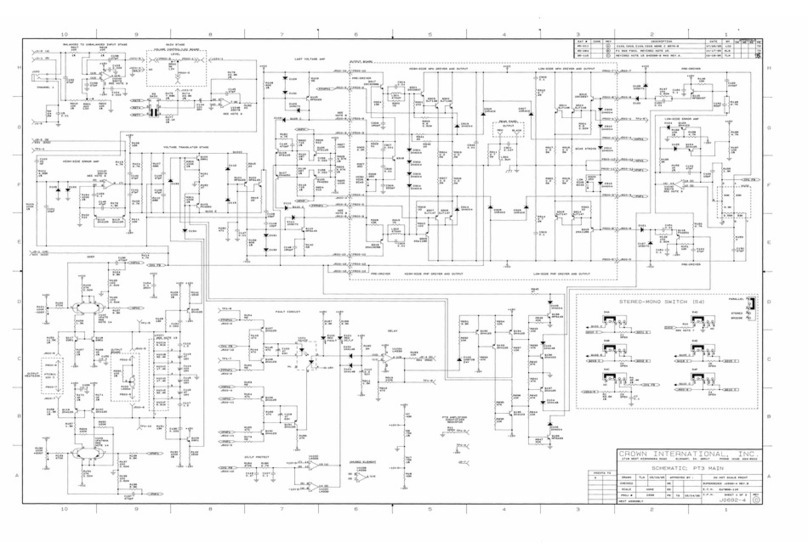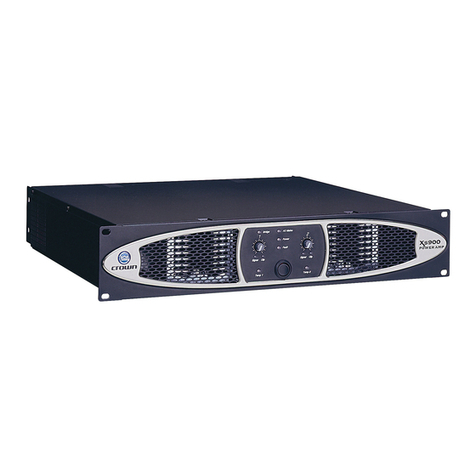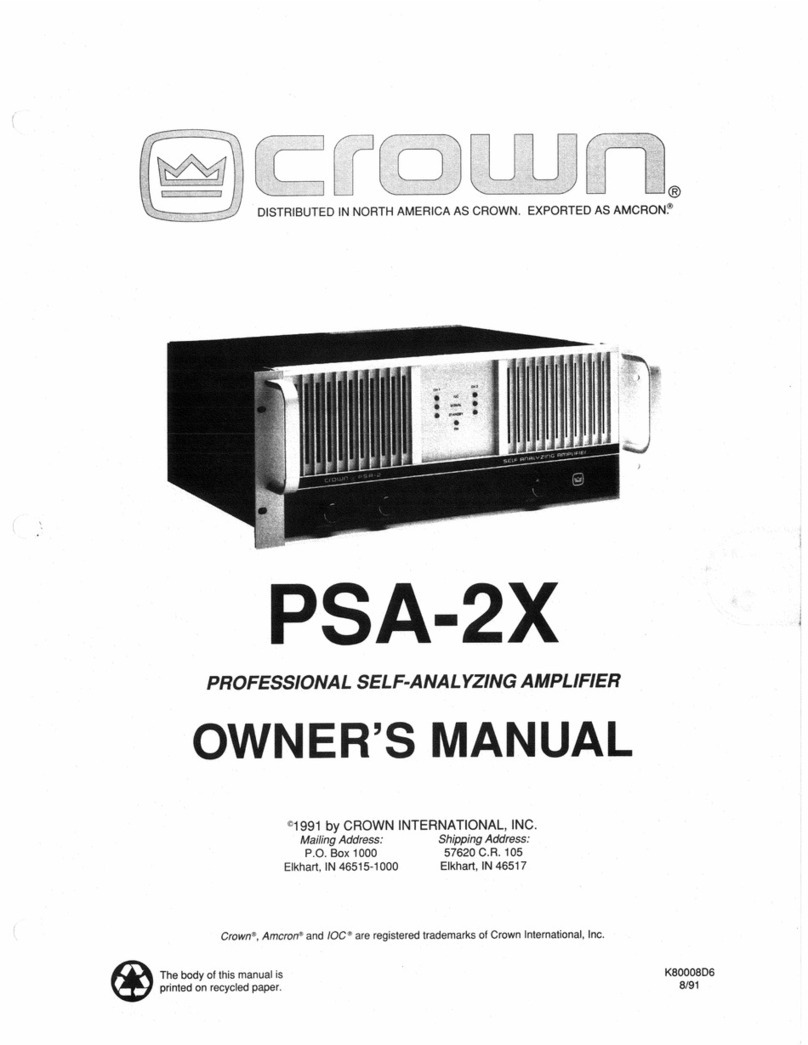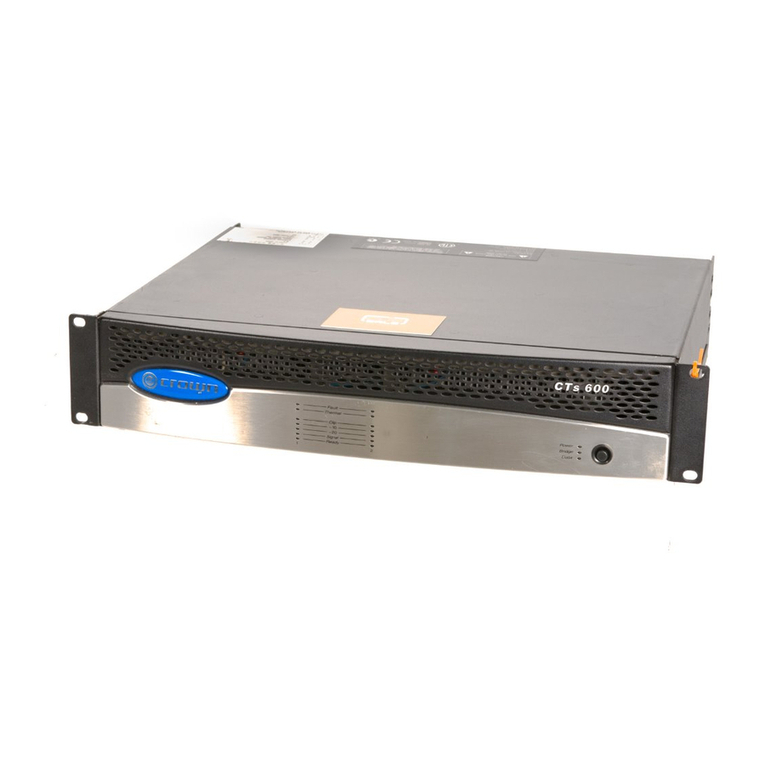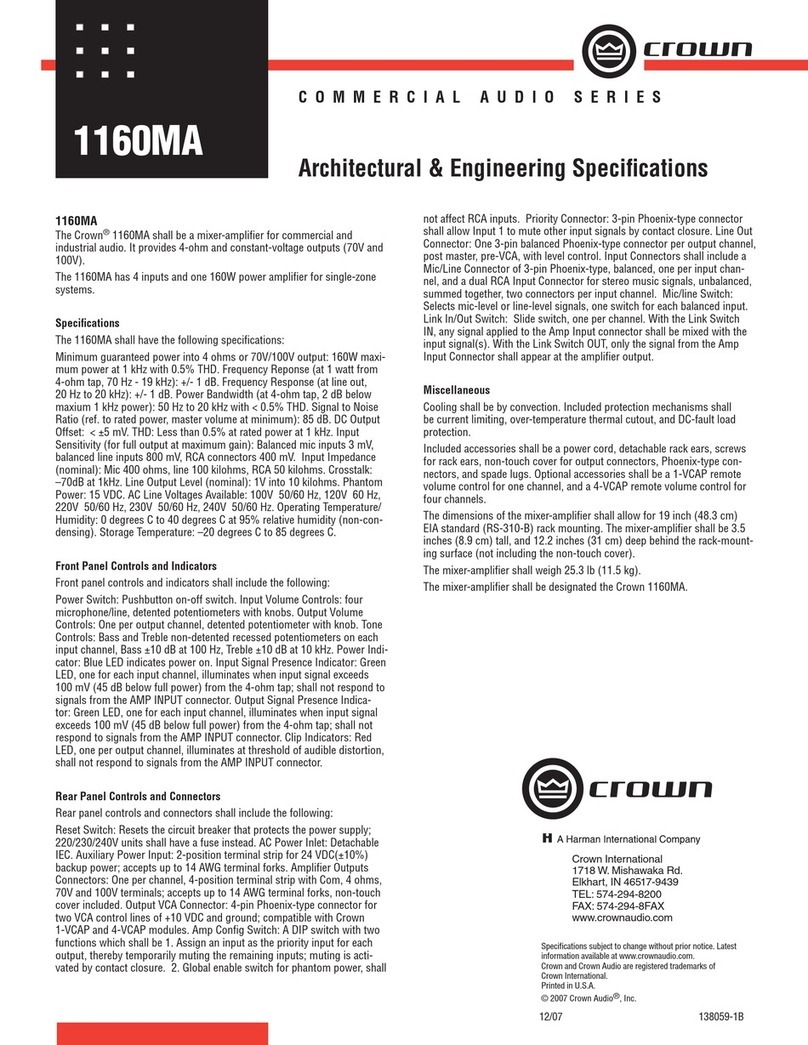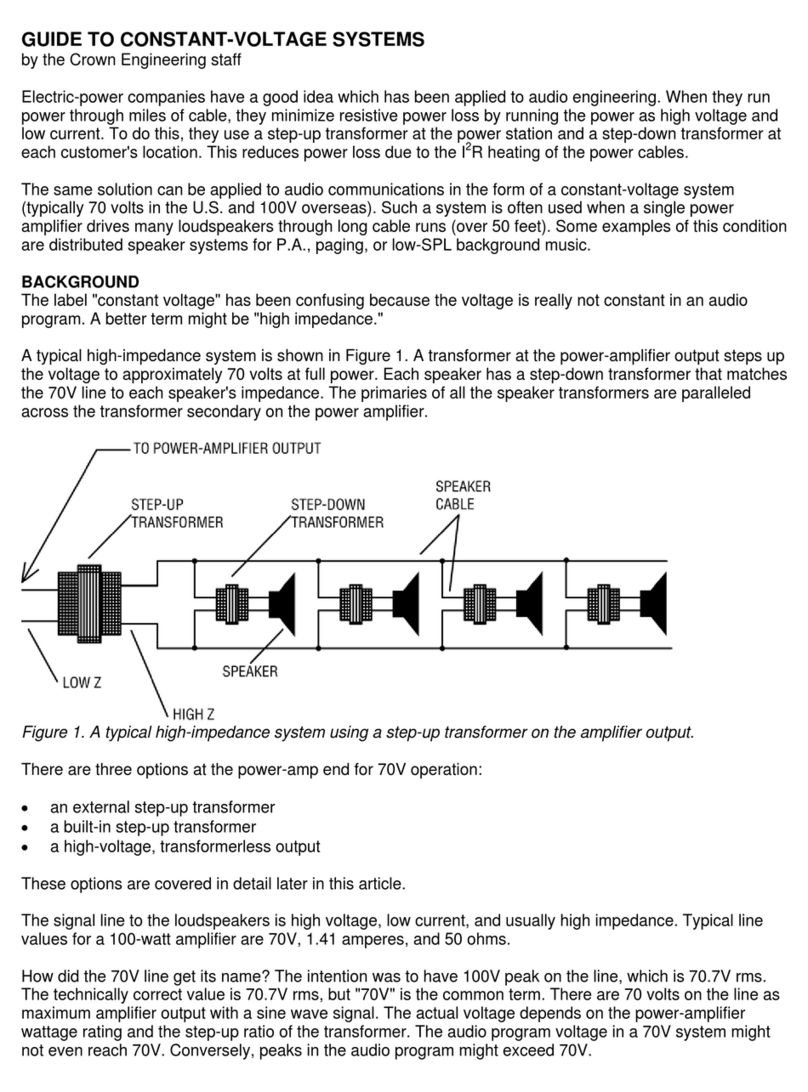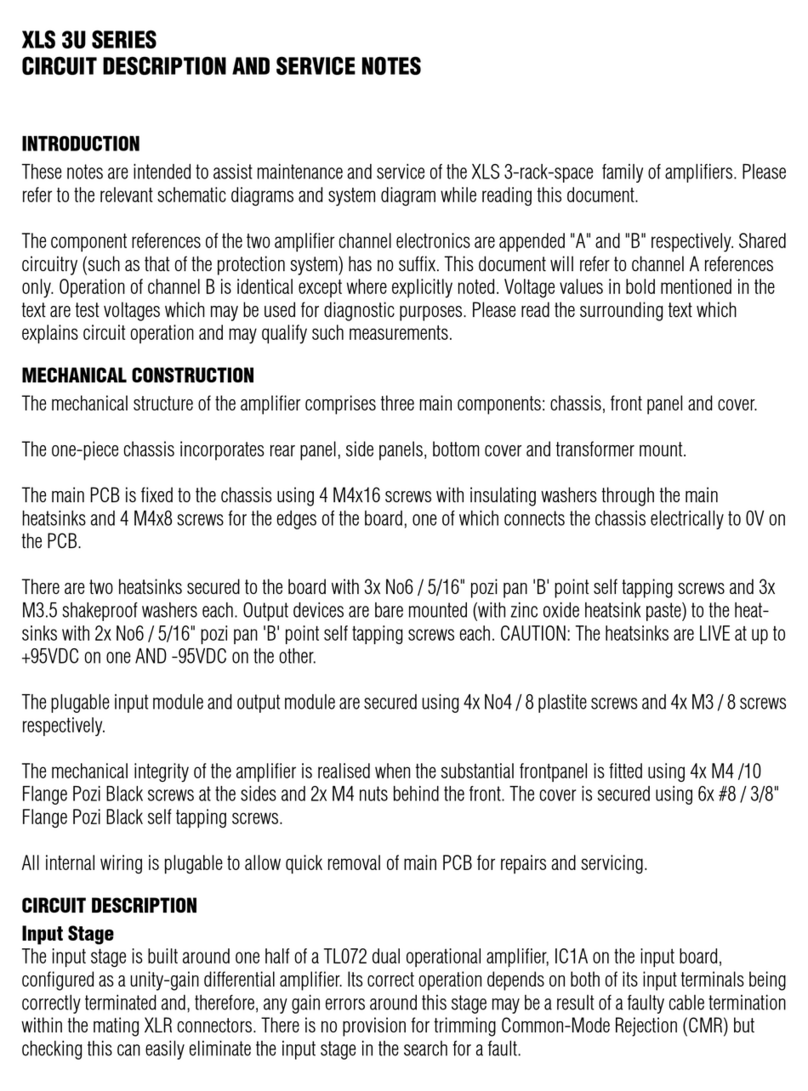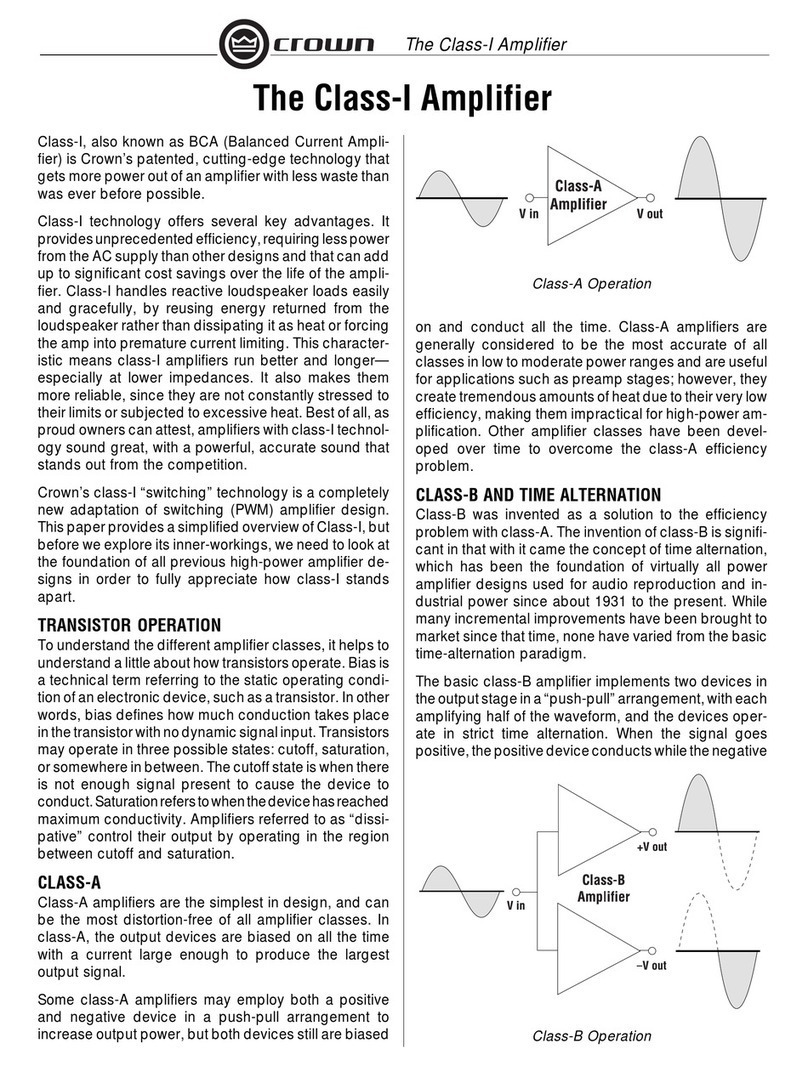
Com-Tech 1600 Amplifier Service Manual
7
Theory
Overview
It should be noted that over time Crown makes im-
provementsandchangesto theirproductsforvarious
reasons. This manual is up to date as of the time of
writing. For additional information regarding these
amplifiers, refer to the applicable Technical Notes
provided by Crown for this product.
Thissectionofthemanualexplainsthegeneralopera-
tion of a typical Crown power amplifier. Topics cov-
eredincludeFrontEnd,GroundedBridge,andODEP.
Due to variations in design from vintage to vintage
(andsimilaritieswithotherCrownproducts)thetheory
of operation remains simplified.
Features
Com-Tech amplifiers utilize numerous Crown innova-
tionsincludinggrounded bridge and ODEP technolo-
gies. Cooling techniques make use of the what is
essentially air conditioner technology. Air flows bot-
tomtotop,andfronttoside.Airflowsashortdistance
across a wide heatsink. This type of air flow provides
significantly better cooling than the “wind tunnel”
technology used by many other manufacturers. Out-
put transistors are of the metal can type rather than
plastic case. This allows for a significantly higher
thermal margin for the given voltage and current
ratings. All devices used are tested and graded to
ensure maximum reliability. Another electronic tech-
nique used is negative feedback. Almost all power
amplifiers utilize negative feedback to control gain
and provide stability, but Crown uses multiple nested
feedback loops for maximum stability and greatly
improveddamping.MostCrownamplifiershavedamp-
inginexcessof1000inthebassfrequencyrange.This
feedback, along with our compensation and ultra-low
distortion output topology, make Crown amplifiers
superior.
Features specific to the Com-Tech Series’ include
slew rate limiting, and audio muting for delay or
protective action. This amplifier can operate in either
a Bridged or Parallel Mono mode as well as dual
(stereo). A sensitivity switch allows selection of input
voltage required for rated output. Level controls are
mounted on the rear panel and are of the rotary type.
Front panel indicators let the user know the status of
the low voltage power supply (enable), signal pres-
ence, distortion, and an ODEP indicator for each
channel which shows the reserve energy status. In
general, the packaging of this model is designed for
maximumwatt/price/weight/sizevaluewithuserfriendly
features.
Foradditionaldetailsrefertothespecificationsection,
or to the applicable Owner’s Manual.
Front End Operation
Thefront end iscomprisedof three stages: Balanced
Gain Stage (BGS), Variable Gain Stage (VGS), and
theError Amp. Figure 1shows a simplified diagramof
a typical front end with voltage amplification stages.
Balanced Gain Stage (BGS)
Input to the amplifier is balanced. The shield may be
isolated from chassis ground by an RC network to
interrupt ground loops via the Ground Lift Switch. The
non-inverting (hot) side of the balanced input is fed to
the non-inverting input of the first op-amp stage. The
inverting (negative) side of the balanced input is fed
to the inverting input of the first op-amp stage. A
potentiometerisprovidedforcommonmoderejection
adjustment. Electrically, the BGS is at unity gain.
(From an audio perspective, however, this stage
actually provides +6dB gain if a fully balanced signal
is placed on its input.) The BGS is a non-inverting
stage. It’s output is delivered to the Variable Gain
Stage.
Variable Gain Stage (VGS)
FromtheoutputoftheBGS,thesignalgoestotheVGS
where gain is determined by the position of the Sen-
sitivity Switch, and level is determined by the level
control. VGS is an inverting stage with the input being
fedtoits op-amp stage. Because gain after this stage
is fixed at 26dB (factor of 20), greater amplifier sensi-
tivityisachievedbycontrollingtheratiooffeedbackto
input resistance. The Sensitivity Switch sets the input
impedancetothisstageand varies the gain such that
the overall amplifier gain is 26 dB, or is adjusted
appropriately for 0.775V or 1.4V input to attain rated
output.
Error Amp
The inverted output from the VGS is fed to the non-
invertinginputoftheErrorAmpop-ampstagethrough
anACcoupling capacitorandinput resistor.Amplifier
output is fed back via the negative feedback (NFb)
loop resistor. The ratio of feedback resistor to input
resistor fixes gain from the Error Amp input to the
output of the amplifier at 26 dB. Diodes prevent
overdriving the Error Amp. Because the Error Amp
amplifies the difference between input and output
signals, any difference in the two waveforms will
produceanearopenloopgainconditionwhichinturn
results in high peak output voltage. The output of the
